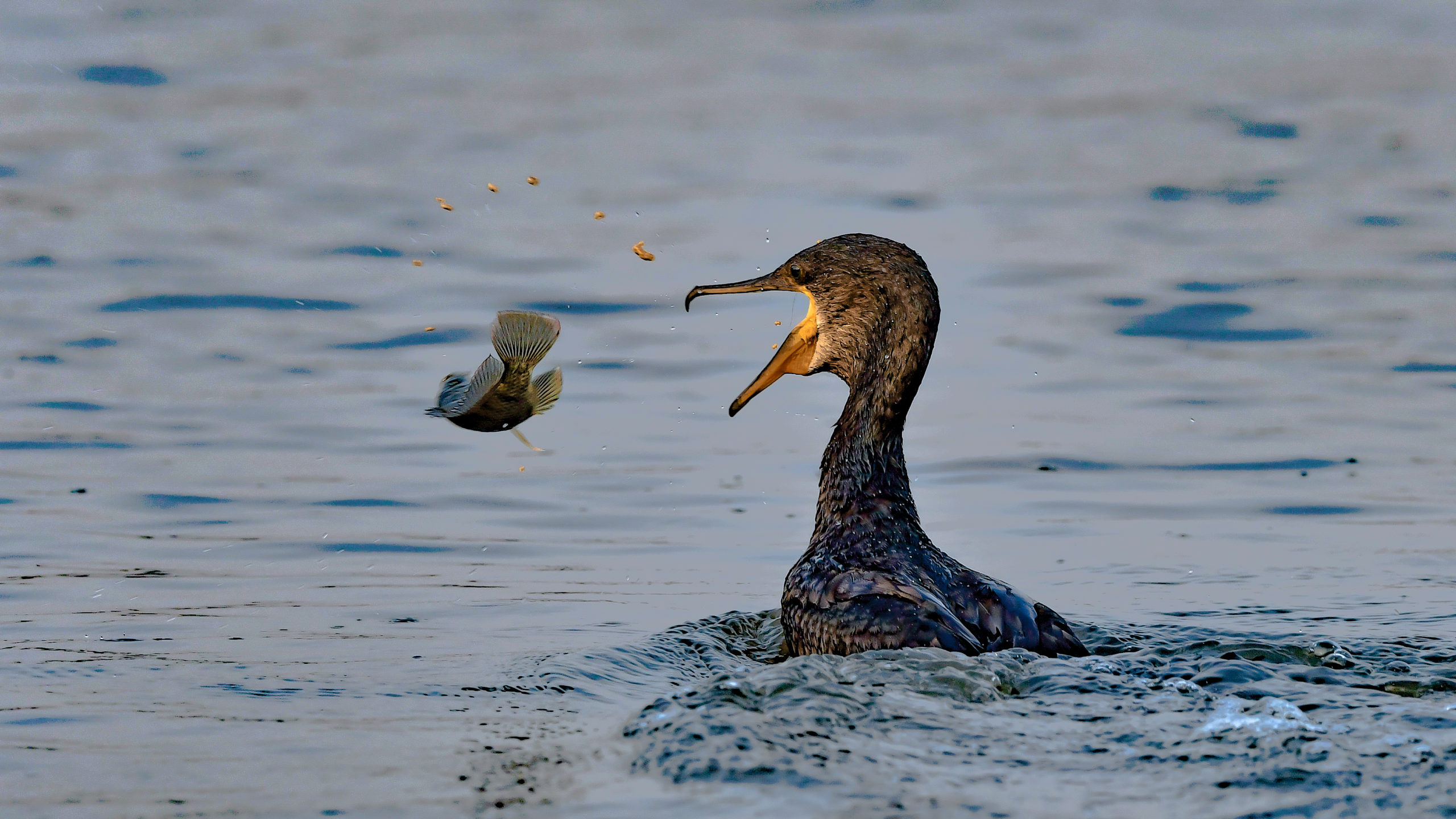 In my humble opinion, based on both field observations and research, we have a large-scale problem with cormorants affecting our fisheries. To inform our fishing partners, both recreational and commercial, of what we are up against I share the following sentiment from the Audubon Society. “Setting bird population goals based on fisheries goals is contrary to good bird management and sets a harmful precedent. Fish-eating birds will become an exception to national protections if natural resource agencies manage them to meet fishery objectives.” (from Audubon Minnesota). So, does bird management supersede good fisheries management? This is what our fisheries departments must contend with, and I believe they must fight the fight before it’s too late.
In my humble opinion, based on both field observations and research, we have a large-scale problem with cormorants affecting our fisheries. To inform our fishing partners, both recreational and commercial, of what we are up against I share the following sentiment from the Audubon Society. “Setting bird population goals based on fisheries goals is contrary to good bird management and sets a harmful precedent. Fish-eating birds will become an exception to national protections if natural resource agencies manage them to meet fishery objectives.” (from Audubon Minnesota). So, does bird management supersede good fisheries management? This is what our fisheries departments must contend with, and I believe they must fight the fight before it’s too late.
The literature on cormorants will tell you that most of its diet consists of fish under 5 inches in length. This is not always the case as any predator will consume what is readily available. Let me share some of my own field observations.
Setting number one: Barn Island Sand Flats, Pawcatuck, CT. Many baby summer flounder are swimming on the sand, easily seen from my boat. There are thousands of them and swimming after them and eating them are hundreds of cormorants. They consume almost every baby fluke in the area.
Setting number two: Thames River, Norwich, CT. We observe a flock of about 50 cormorants diving and catching small wintering striped bass (in the 12- to 15-inch range.) For several hours the birds are seen bringing striped bass to the surface and gulping them down whole.
Setting number three: Long Pond, Ledyard, CT. On the opening day of the trout season a flock of around 100 cormorants are seen chasing trout and bringing them to the surface. How many trout were consumed? I didn’t stay long enough to make an accurate count, but most of the literature on cormorants indicates that they eat about a pound and a half of fish per day. In Connecticut, 10- to 12-inch trout weigh about a half pound or less. Do the math! One hundred cormorants, multiplied by four trout each daily, means these birds wiped out 400 trout in one day! That equates to our fishing license fees helping to feed cormorants.
This problem of cormorants eating stocked fish is not just local. “Stocking of trout and salmon is impractical when cormorant numbers at stocking sites become excessive, and this continues to happen throughout lakes Michigan and Huron.” (Cormorants damaging fish populations By Mary Drier, For the Tribune: Published 6:05 am EST, Saturday, February 29, 2020). Unlike us here in New England, places like Minnesota and Canada wasted no time and placed a bounty on the cormorants to save their fisheries. The bounty worked. Now the bounty has stopped, and the same problems have resumed. We have a situation now where cormorants are overpopulated and have no meaningful natural predators to control their population. While fisheries management struggles to create bag, size and seasonal limits on both recreational and commercial fisherman, a growing problem of cormorant predation on the fish stocks is not being addressed. Any attempts by fisheries management to control cormorant populations are vehemently opposed by Audubon. There needs to be some balance here so fish stocks can be protected from the now overpopulated cormorants.
** Editor’s Note: This past winter, the U.S. Fish and Wildlife Service, gathered information to develop a proposed rule to expand management of double-crested cormorants (Phalacrocorax auritus) throughout the United States, with public comment and public scoping webinars taking place. While the comment period has now passed, the information on the proposed rule changes may still be viewed online at https://www.regulations.gov/document?D=FWS-HQ-MB-2019-0103-0001.



